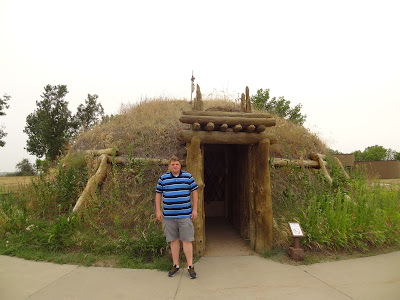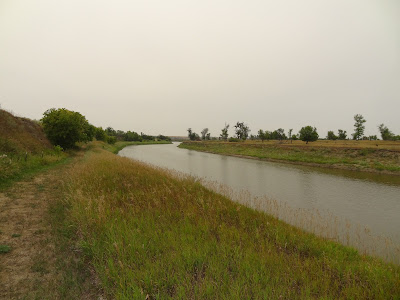Nearby town: Stanton, ND
In central North Dakota, about an hour's-drive northwest of Bismarck, you will find the archaeological remains of three villages of the Hidatsa tribe (a band of Northern Plains Indians). The villages lied along the Knife River, a tributary of the mighty Missouri.
The villages were first established around the year 1600. At its height, experts estimate that approximately over 1,200 people lived in these villages. There are no standing remains, but you can still see the circular depressions in the ground (created by earth-lodges), cache pits, and the trails created by travois. Travois are frame structures that would be dragged (usually by horses, but sometimes by dogs) in order to carry large and heavy loads overland.
The most famous person to have lived in these villages was Sacagawea. Sacagawea was born into the Lemhi Shoshone tribe near the present-day Idaho-Montana border. However, around the year 1800, when she was around 12 years old, she was taken captive by the Hidatsa during a raid, and eventually ended up here. A year later, she was sold into a "marriage" to Toussiant Charbonneau, a fur trader from Quebec. Charbonneau had been living among the Hidatsa for decades. In 1804, the famous Lewis & Clark established Ft. Mandan nearby to spend the winter. They recruited Charbonneau and Sacagawea to join the Corps of Discovery, mainly because Sacagawea could speak Shoshone (the language of many tribes that Lewis & Clark would come across as they continued their journey). Sacagawea's guidance, language abilities, and knowledge of land and tribal customs proved invaluable to the expedition's success.
Your first stop should be the outstanding Visitor Center, which has a very unique and memorable design.
Take the park loop trail. It's only about a mile. See the remains (the circular depressions - or "footprint" of the earthlodges) and walk along the Knife River. It's a pleasant walk. We spotted some deer along the river.
The Knife River Villages were an important trading center in the area. The trade here largely consisted of furs, guns, copper, corn, and other agricultural products.
The villages thrived until about 1837, when smallpox outbreaks nearly wiped out the entire Hidatsa population. The survivors of the tribes affected by this outbreak (Hidatsa, Mandan, and Arikara) eventually migrated farther north.
This is a interesting stop for an hour or two and is worth visiting if you are in the area. For more info: https://www.nps.gov/knri/index.htm





















No comments:
Post a Comment